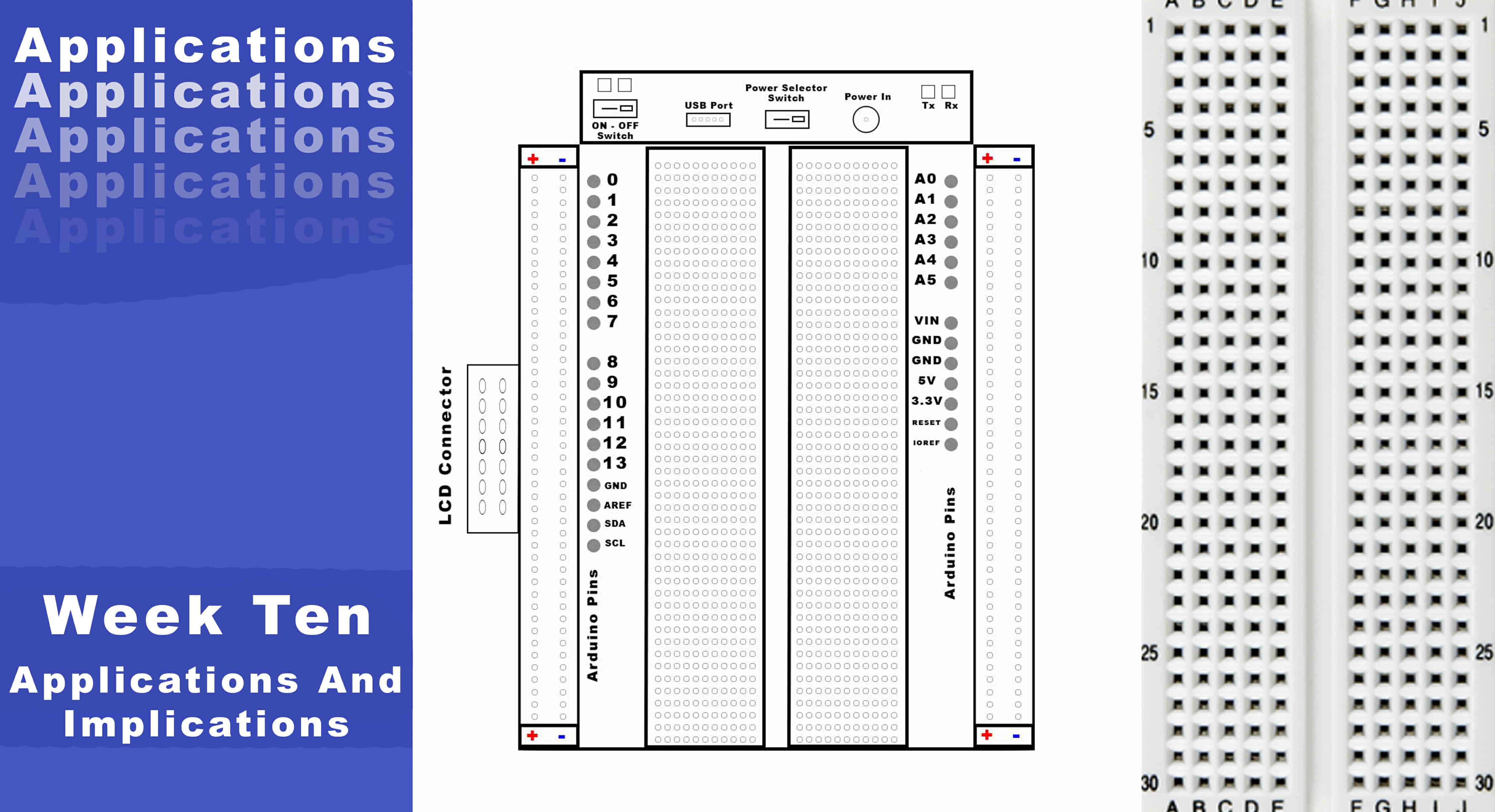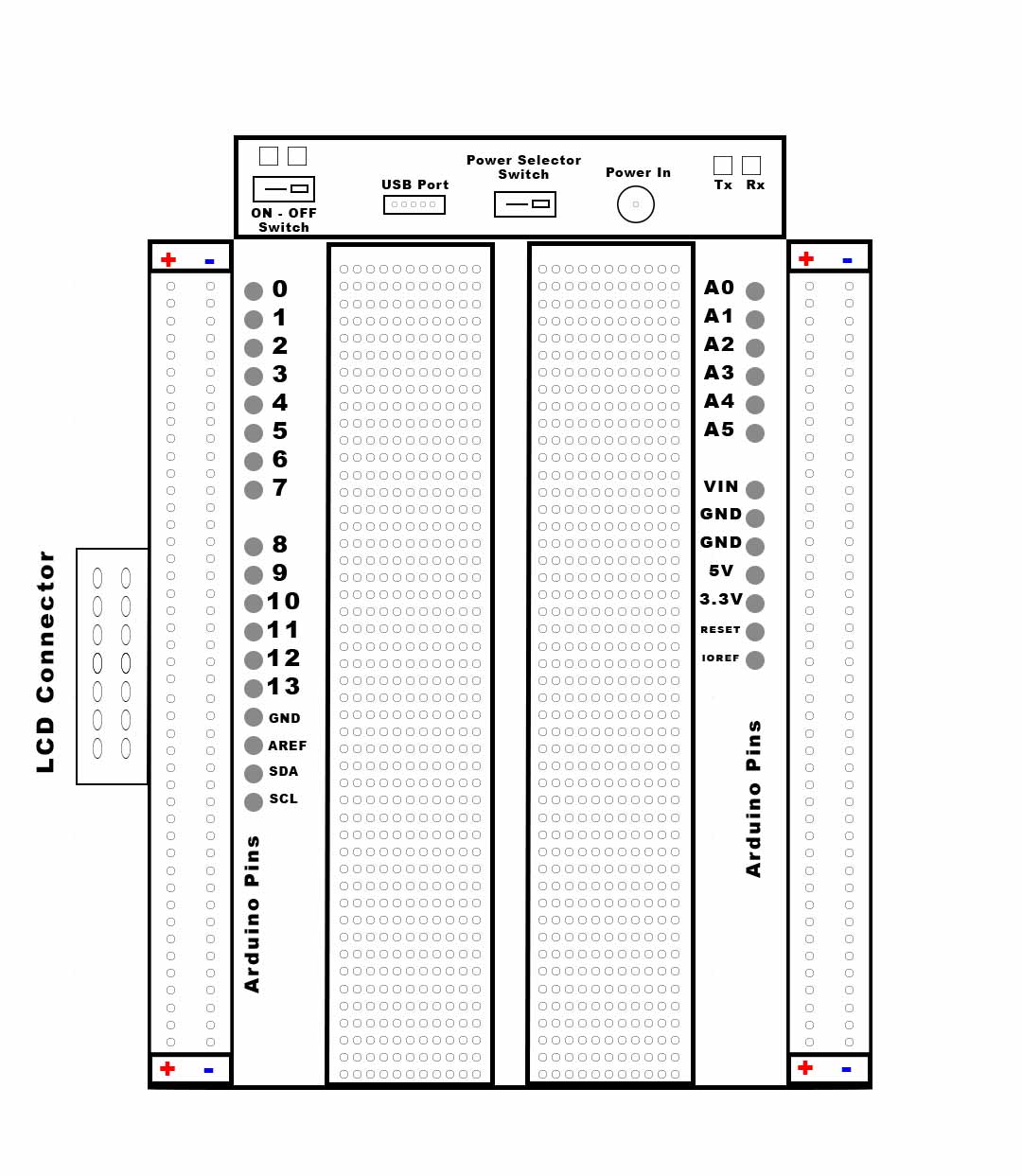Applications And Implications

What will it do?
I wanna build a smart breadboard that combines the normal breadboard and a microcontroller board in one combo. The Edge here is to make the breadboard compatible with the SMD components. Thanks to Bruno from FabLab EDP for that idea.
So my Cairo breadboard(I gave it a name already :D) will reduce the flying wires and messy circuits, it will make prototyping and tinkering more easier and looks more good, I guess.
I’m thinking about making the Cairo breadboard rechargeable. will have a built-in 9V rechargeable battery dedicated to power the Atmega328AU chip circuit. So, there is no need for an external power source to power your built-in ATmega chip. But, what if the person who is using the new breadboard working on a circuit/application that requires more power than the built-in 9V power source. I have good news. He/She can use the “Power Source Selector Switch” to select if he/she wants to use the built-in 9V rechargeable battery for sourcing the circuit with power or to use an external power source.
Also, I’m thinking about why not connecting the new breadboard with the world of augmented reality. I’m thinking about making a mobile app companion that can help the students to build their circuits and check if there are errors in their build. It is directed more towards kids who are learning electronics. Actually, I’m not sure if I will be able to finish this feature, especially that I don’t have previous experience in augmented reality development.
The most challenging part is to make the breadboard compatible with SMD components. I’m still doing my research on this part and I hope to come with a valid concept to it.

Who's done what beforehand?
After doing some research I found only these guys. They are building a breadboard that has a built-in Arduino compatible board. But my project is kinda different because I wanna make the whole breadboard SMD-compatible, and connect it with the augmented reality world

What will you design?
- I will design the brain of the breadboard which is the electronic board. It will be fully Arduino-compatible, has a built-in MIC and hall effect sensor to make sensing the external world easier, compatible with any Arduino shield, and can handle input voltage up to 30V.
- I will design the breadboard mechanical structure itself. The most tricky and challenging part is to make that breadboard SMD-compatible.
What materials and components will be used?
- The electronics board
| Part Number | Description | Quantity | Supplier |
|---|---|---|---|
| ATMEGA328P-AU-ND | IC MCU 8BIT 32KB FLASH 32TQFP | 1 | DigiKey |
| 669-E2SFAS-16.000MTR | Crystal Oscillator 16MHZ SMD | 1 | Mouser Electronics |
| 445-1423-1-ND | CAP CER 1UF 50V X7R 10% 1206- | 1 | DigiKey |
| 399-4674-1-ND | CAP CERAMIC .1UF 250V X7R 1206- | 4 | DigiKey |
| 587-1352-1-ND | CAP CER 10UF 35V Y5V 1206- | 2 | DigiKey |
| 311-10.0KFRCT-ND | RES 10.0K OHM 1-4W 1% 1206 SMD | 1 | DigiKey |
| 311-1.00KFRCT-ND | RES 1.00K OHM 1-4W 1% 1206 SMD- | 3 | DigiKey |
| 311-499FRCT-ND | RES 499 OHM 1-4W 1% 1206 SMD | 6 | DigiKey |
| 160-1169-1-ND | LED Green CLEAR 1206 SMD- | 3 | DigiKey |
| 160-1889-1-ND | LED Blue CLEAR 1206 SMD- | 3 | DigiKey |
| 620-1402-1-ND | SENSOR LINEAR ANALOG SOT23W | 1 | DigiKey |
| 423-1134-1-ND | MIC MEMS ANALOG OMNI -22DB | 1 | DigiKey |
| LM3480IM3-3.3/NOPBCT-ND | IC 3.3V100MA LDO VREG SOT23- | 1 | DigiKey |
| LM3480IM3-5.0/NOPBCT-ND | IC 5.0 100MA LDO VREG SOT23- | 1 | DigiKey |
- The mechanical enclosure
- I will use the 3d printer, Modela milling machine, ABS filament, and Wax in breadboard enclosure prototyping and production.
Where will it come from?
- Electronics components
- Most of the electronics can be found in the Fab Inventory, except the CH340G IC that converts from USB to Serial, 16MHz crystal oscillator for the ATmega328p microcontroller clock and 12MHz crystal oscillator for the CH340G IC. I already bought these components from a local store here in Egypt. I already attached a table for the components with there references from DigiKey.
- The mechanical structure.
- I’m still searching on how to make an enclosure like this using the available tools and machines in the FabLab, but I think it can be made by molding & casting in the lab. Or in the worst case, we can 3d print it.
How much will they cost?
- Electronic Components
[table for the electronics hardware with the prices]
- The mechanical structure.
- For now, I don’t know how much the enclosure production will cost.
What parts and systems will be made?
- I will design and fabricate the brain of the breadboard which is the electronic board.
- I will design and fabricate the breadboard mechanical structure itself.
- To make that device easy to use, I will make an Arduino library for the Cairo breadboard to make accessing the built-in MIC and hall effect sensor and the other features easier.
What processes will be used?
- Electronics board
- Electronics CAD, Designing the Main electronic board.
- Electronics Production, Production of the electronic board.
- Embedded Interfacing and communication, Electronics Interfacing and communication.
- Embedded Programming, Making an Arduino library for Cairo breadboard.
- Mechanical structure.
- Mechanical CAD, Designing the breadboard enclosure itself.
- Mechanical Production, Production of the breadboard enclosure using 3d printer in the early phase prototyping. Then I will use a more practical and cheap method like molding & casting.
What questions need to be answered?
- What is exactly the mechanical production techniques?
- Is molding and casting will help in the breadboard enclosure production?
I guess I will find these questions answers in the Molding&Casting lecture. I hope :D
How will it be evaluated?
Cairo breadboard can get programmed directly on Arduino IDE and the program should run smoothly without any problems, The breadboard should be SMD-compatible.